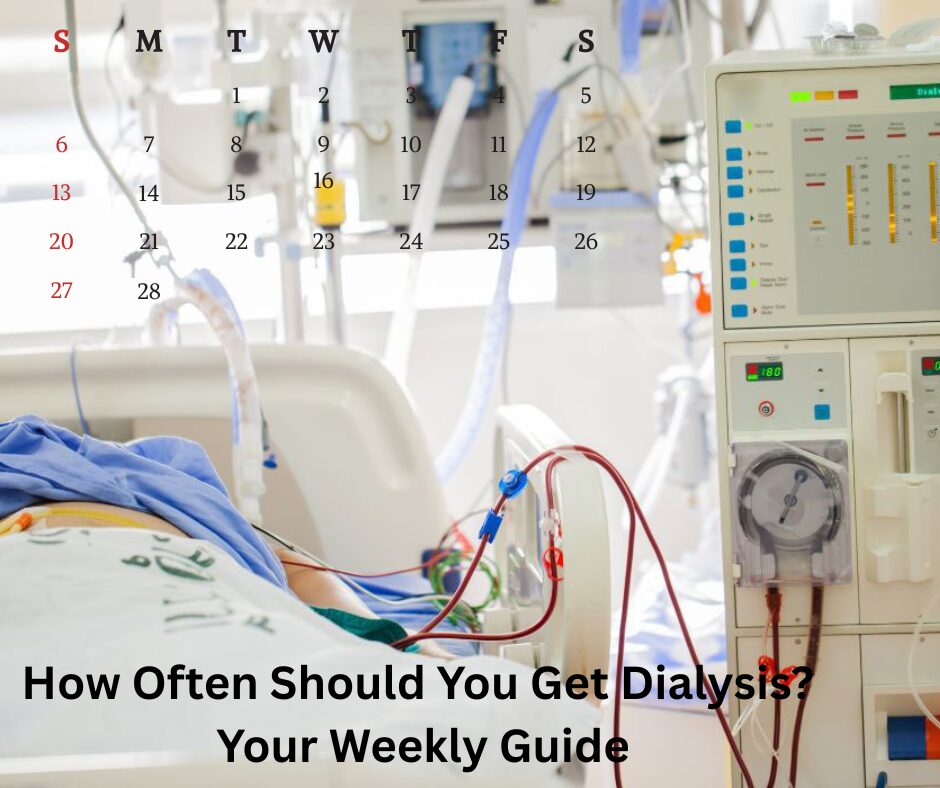When you have chronic kidney disease (CKD) or kidney failure, dialysis becomes a vital part of your treatment plan. But one common question patients and families ask is: how often should you get dialysis? The answer depends on your individual health, the type of dialysis, and your doctor’s recommendations.
In this weekly guide, we break down the most common dialysis schedules and what you can expect from each. Also it is to said that Doctor recommendation is the best one so please do follow of your Doctor.
Why Do You Need Dialysis?
Dialysis is a treatment that performs the essential functions of your kidneys—removing waste, excess fluids, and toxins from your blood. It helps maintain a healthy balance of electrolytes and supports your overall well-being when your kidneys can’t do the job themselves.
Types of Dialysis and Frequency
There are two main types of dialysis: Hemodialysis and Peritoneal Dialysis. Each has its own treatment schedule.
1. Hemodialysis: 3 Times Per Week (Typical Schedule)
Most people on hemodialysis visit a dialysis center three times per week, on alternate days. A common schedule looks like this:
- Monday, Wednesday, Friday or
- Tuesday, Thursday, Saturday
Each session typically lasts 4 hours, depending on your weight, toxin levels, and medical condition.
Why this frequency?
Three times a week is considered optimal to prevent the build-up of toxins and fluids between sessions. If you miss a session, it can lead to serious complications like high potassium, fluid overload, and shortness of breath.
2. Peritoneal Dialysis: Daily Treatment at Home
Peritoneal dialysis is usually done every day, often multiple times a day or overnight.
- Continuous Ambulatory Peritoneal Dialysis (CAPD): 4–5 exchanges per day
- Automated Peritoneal Dialysis (APD): Done nightly using a machine while you sleep
Why daily?
Since peritoneal dialysis is gentler and done continuously, daily treatment keeps waste levels in the blood more stable.
3. Home Hemodialysis: More Flexibility
Some patients opt for home hemodialysis, which allows for more flexible schedules:
- Short Daily Hemodialysis: 5–6 times a week, shorter sessions
- Nocturnal Hemodialysis: 3–6 nights a week while you sleep
This option provides better control over symptoms and may improve quality of life, but requires special training and equipment.
How Your Doctor Decides Your Dialysis Frequency
Several factors determine your dialysis schedule:
- Level of kidney function (GFR)
- Blood test results (urea, creatinine, potassium)
- Fluid retention levels
- Symptoms like fatigue, nausea, swelling
- Type of dialysis and patient preference
Never change your schedule without medical advice. Skipping sessions can lead to serious health issues.
Tips to Stay on Track with Your Dialysis Routine
- Set reminders for treatment days
- Stay hydrated (as per your doctor’s advice)
- Follow your renal diet to reduce fluid and toxin build-up
- Keep open communication with your dialysis team or doctor
- Don’t ignore symptoms like shortness of breath, swelling, or chest pain
Follow the Right Schedule for a Healthier Life
Dialysis is life-saving, but it only works if done regularly and correctly. Whether you’re on hemodialysis three times a week or doing daily peritoneal dialysis, the key is consistency. Always work closely with your healthcare provider to find a schedule that meets your medical needs and lifestyle.



